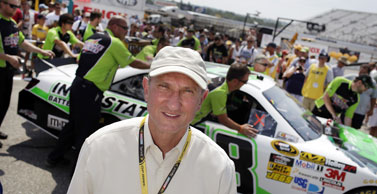Making the Most of Cognitive Diversity

One of us, Kim, is a Pioneer with a good bit of Driver mixed in. She values expansive thinking and rapid advancement, and she leads a large team dominated by other extroverted, free-wheeling Pioneers. The psychology of why cyclists enrage car drivers. Share using Email. Something about cyclists seems to provoke fury in other road users. And there are good and bad drivers. This is one of the five drivers originally identified in the field of Transactional Analysis by Taibi Kahler. Here are some simple and useful notes on it. I must make other people happy. I know that I have done this when they acknowledge and praise me. Only others can tell me when I have done well. If they do not, I have failed.
When teams fall short of their potential, it’s often because leaders don’t know how to spot and manage the differences in how people approach their work—and as a result, some of the best ideas go unheard or unrealized. To help organizations claim this lost value, Deloitte’s Suzanne M. Johnson Vickberg and Kim Christfort provide a framework for identifying and managing four primary working styles.
Pioneers value possibilities, and they spark energy and imagination on their teams. Guardians value stability, and they bring order and rigor. Drivers value challenge and generate momentum. And Integrators value connection and draw teams together. Every person is a composite of these four styles, though most people’s behavior and thinking are closely aligned with one or two.
The four styles give leaders and their teams a common language for discussing similarities and differences in how people experience things and prefer to work. Once managers have identified the work styles of their team members and considered how the differences among them are beneficial or problematic, they must take steps to ensure that they’re not left with all frustration and no upside.
To get the most from the styles on their teams, leaders should (1) pull opposite types closer together to generate productive friction, (2) give more visibility and voice to people with nondominant perspectives, and (3) take extra care to get input from sensitive introverts, who risk being drowned out but have valuable contributions to make.

Five Executives Weigh In
Senior leaders at Marriott, American Express, Southwest, National Grid, and Kellogg share their experiences in applying Deloitte’s framework in their teams and organizations.
A Biological Approach
Helen Fisher, the biological anthropologist whose research informed Deloitte’s work on team chemistry, derives her personality assessment from brain science. In searching for an answer to what makes an individual fall in love with one person and not another, she found that four biological systems—dopamine/norepinephrine, serotonin, testosterone, and estrogen/oxytocin—are each linked to a particular suite of personality traits. Fisher explains the science behind her work, talks about how to identify and adjust productively to others’ personality styles, and considers whether personality screening can and should inform management decisions.
The Tests That Shaped the Industry
Over the past 100 years, three tests—the Myers-Briggs Type Indicator, the Five-Factor Model, and StrengthsFinder—have had an outsize impact on the theory and practice of personality screening.

The complete spotlight package is available in a single reprint.
Motorsports are popular and dangerous
Motorsport racing is divided into several annual class competitions, the most wide- ly known being the NASCAR Sprint Cup and the Nationwide IndyCar Series. The NASCAR competition is a series of 36 races that began this year with the Feb. 26 Daytona 500 in Daytona Beach, Fla. The IndyCar series includes the Indianapolis 500 and opens this year with the March 25 Honda Grand Prix in St. Petersburg, Fla.
In the accompanying article on the psychology of auto racing, Shaun Tyrance, Ph.D., refers to the fate of British racing driver Dan Wheldon to exemplify the danger of the sport. Wheldon, the 2005 winner of IndyCar series and winner of the Indianapolis 500 in both 2005 and 2011, died Oct. 16, 2011 at age 33 from injuries suffered in a collision at the 2011 IZOD IndyCar World Championship in Las Vegas.
The recent untimely death of Dan Wheldon (former Indianapolis 500 winner) is a stark reminder of the danger NASCAR and Indy Car drivers face every time they strap on their helmets and get behind the wheel.
Regardless of the sport, all athletes risk serious injury when they compete, but “stick and ball” athletes rarely face the dangers that are an accepted way of life in motorsports. Since NASCAR was formed in 1947, 26 Sprint Cup drivers have been killed as a result of injuries suffered from racing accidents, and four drivers have been killed in Indy Car since its inception in 1980.
As a therapist who has worked with numerous Cup, Nationwide, K&N and Whelen series drivers, I have found that the physical and psychological makeup of a successful race car driver is very similar to that of elite athletes in every sport.
Elite drivers have the ability to focus for long periods of time with little to no break in competition. A typical NASCAR Cup race is four hours long and covers 400 to 600 miles. Contrary to popular belief, most of the best drivers in the sport are in great physical condition, as they have to endure the 120 degree-plus temperatures of their cars on race day. After each race, most drivers have lost 10 to 15 pounds of water weight.
A driver’s mental toughness is not only tested through the ability to navigate these conditions, the driver must also have the ability to drive “on the edge.” NASCAR and Indy Car drivers drive at speeds in excess of 180 mph, and in order to be great in their sport, they must be willing to race at these speeds less than two feet from their competition.
In my experience, this willingness is the single biggest deciding factor on whether a driver has “it” or not. If a driver is not will- ing to drive a car into tight spaces on the race track, then he or she will bring the car home in one piece but will not compete for championships.
It takes a unique blend of smarts and daredevil to compete at the highest levels of motorsports. Unfortunately, when drivers push their cars to the edge, accidents occur. As in the case of Dan Wheldon, sometimes these wrecks can be fatal. Drivers at every level understand the dangers they face while competing, and drivers who are unwilling or unable to take chances with their lives on the track do not last long in the sport.
Race car drivers have some of the hard- est jobs in sports. In order to be successful, they must put themselves in harm’s way. Elite drivers have the ability to push their cars over the edge (which typically leads to horrific crashes) and jump back in the car the next weekend and drive with the reckless abandon needed to win races.
Drivers Pych Others Jobs
It is widely known in racing circles which drivers have lost their ability to compete due to not being able to mentally recover from bad accidents. This is similar to a running back who tears an ACL or a golfer who has shoulder surgery and is unable to trust one’s body enough to compete at the pre-injury level. Unfortunately for drivers, the next bad accident could be his or her last, and many drivers find it difficult to get back behind the wheel after surviving a big wreck.
As a result of the mental complexities of racing, a number of NASCAR and Indy Car teams employ therapists trained in sport psychology to work with their drivers. I worked full-time for a NASCAR team that raced three Cup cars and two Nationwide cars. I have also worked with more than 10 NASCAR developmental drivers as a consultant.
With the start of the race season upon us, each weekend we are reminded of how mentally tough these drivers are for truly putting their life on the line for the sport they love. The sport is more than just a bunch of left turns!
———-
Drivers Pych Others Practice
Shaun Tyrance, Ph.D., is a licensed therapist who specializes in sport psycholo- gy. He earned his Ph.D. in counseling from the University of North Carolina at Charlotte and his masters in sport psycholo- gy from the University of North Carolina at Greensboro. He was a four-year varsity let- ter winner in football at Davidson College. He worked for the football program at North Carolina State University for three years, and after NCSU he became the sport psychology consultant at Chip Ganassi Racing in NASCAR. At Chip Ganassi Racing, Tyrance helped Cup and Nationwide Series drivers and pit crew members perform at their highest levels during races. As a con- sultant, he has worked with hundreds of Division I and professional athletes from various institutions including: Revolution Racing (NASCAR), UNC Charlotte, Davidson College, NC State, University of Florida and others. His website is www.90percentmental.com and his email is: styrance@southeastpsych.com.
